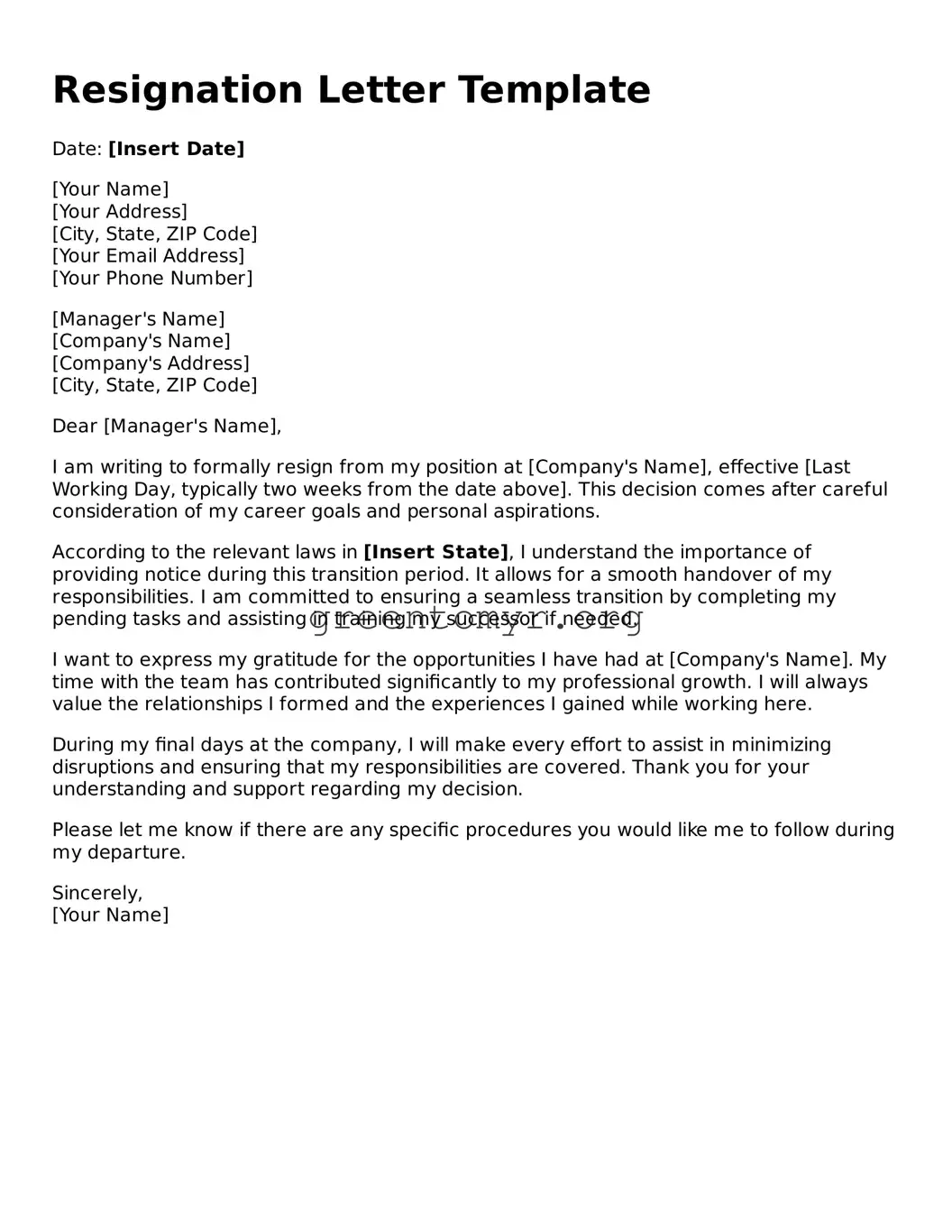Resignation Letter Template
Date: [Insert Date]
[Your Name]
[Your Address]
[City, State, ZIP Code]
[Your Email Address]
[Your Phone Number]
[Manager's Name]
[Company's Name]
[Company's Address]
[City, State, ZIP Code]
Dear [Manager's Name],
I am writing to formally resign from my position at [Company's Name], effective [Last Working Day, typically two weeks from the date above]. This decision comes after careful consideration of my career goals and personal aspirations.
According to the relevant laws in [Insert State], I understand the importance of providing notice during this transition period. It allows for a smooth handover of my responsibilities. I am committed to ensuring a seamless transition by completing my pending tasks and assisting in training my successor if needed.
I want to express my gratitude for the opportunities I have had at [Company's Name]. My time with the team has contributed significantly to my professional growth. I will always value the relationships I formed and the experiences I gained while working here.
During my final days at the company, I will make every effort to assist in minimizing disruptions and ensuring that my responsibilities are covered. Thank you for your understanding and support regarding my decision.
Please let me know if there are any specific procedures you would like me to follow during my departure.
Sincerely,
[Your Name]
